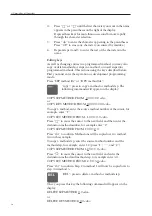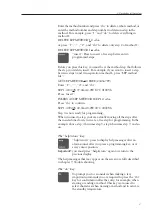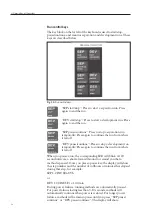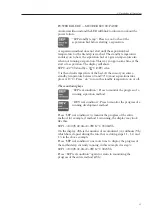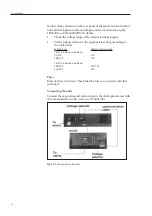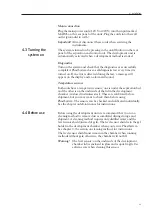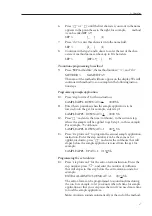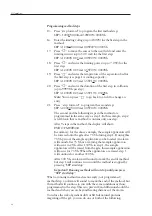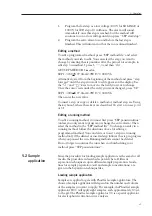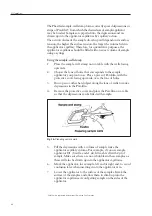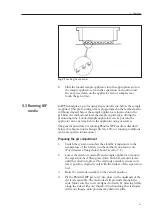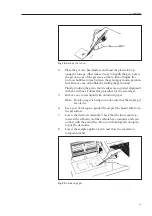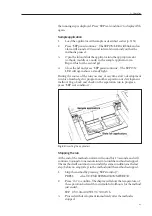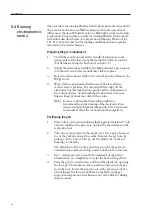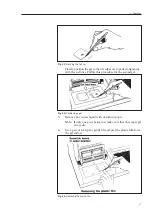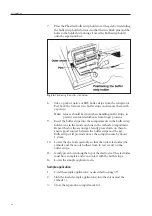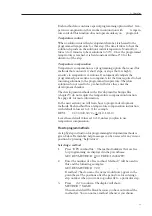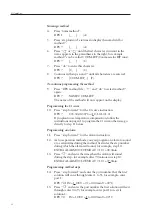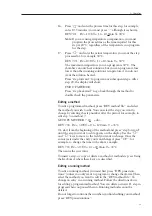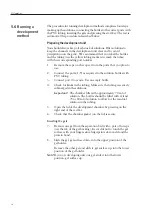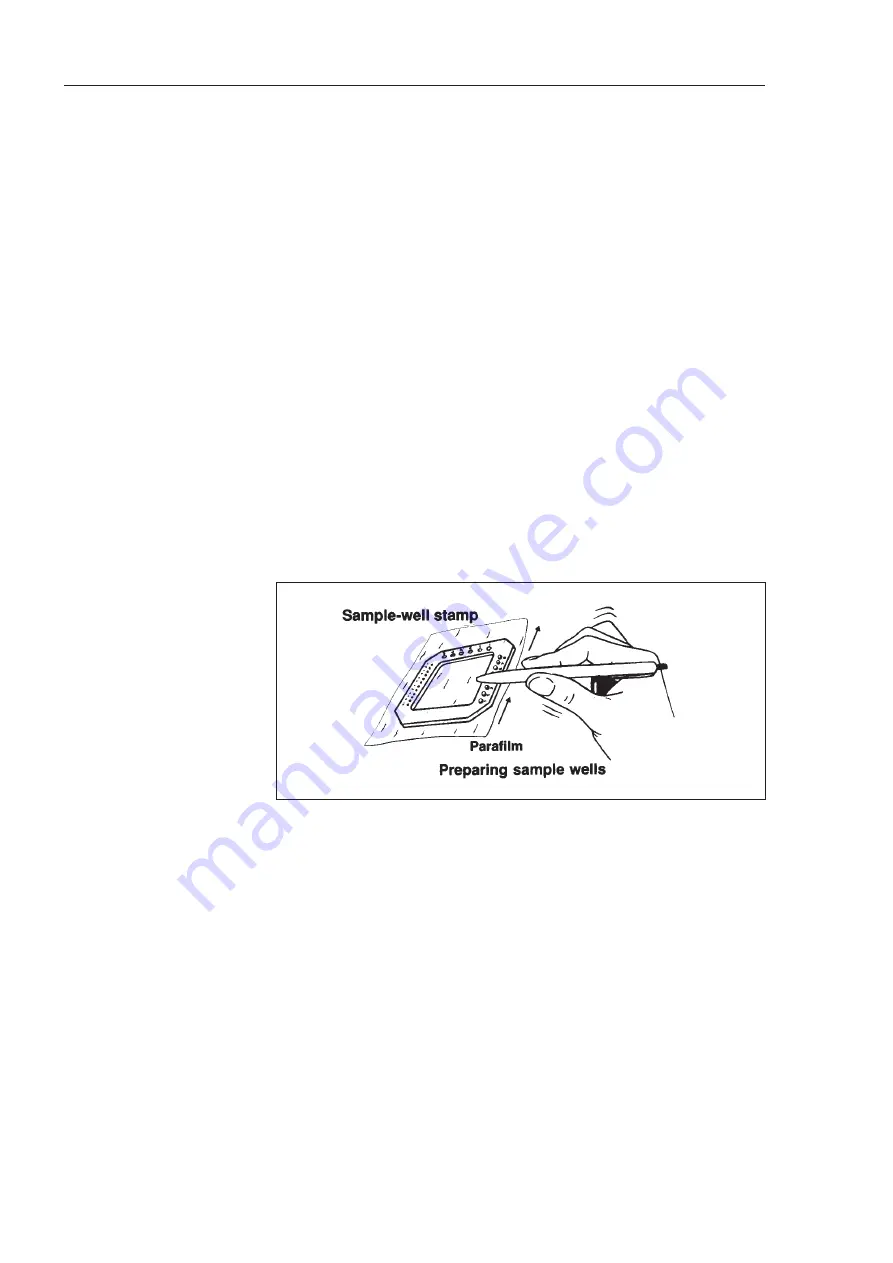
40
The PhastGel sample-well stamp forms correctly spaced depressions in
strips of Parafilm
®
, from which the desired size of sample applicator
may be loaded. Samples are pipetted into the depressions and are
drawn up into the applicator capillaries by capillary action.
The actual volume of the sample drawn up will depend on its surface
tension; the higher the surface tension, the larger the volume held in
the applicator capillary. Therefore, for quantitative purposes, the
applicator capillaries should be filled with an exact volume of sample
using a syringe.
Using the sample-well stamp
1.
Place the sample-well stamp onto a table with the wells facing
upwards.
2.
Choose the lane of holes that corresponds to the sample
applicator you plan to use. Place a piece of Parafilm, with the
protective cover facing upwards, over the lane of holes.
3.
Run a pen or other hard object along the lane of wells to make
depressions in the Parafilm.
4.
Remove the protective cover and place the Parafilm on a table
so that the depressions can be filled with sample.
Fig. 16.
Preparing sample wells.
5.
Fill the depressions with a volume of sample twice the
applicator capillary volume. For example, if you use sample
applicator 8/1 (8 wells, each 1 µl), fill each well with 2 µl of
sample. Make sure there are no air bubbles in these samples as
these will also be drawn up into the applicator capillaries.
6.
Mark the applicator, for example, left end or right end, to avoid
confusion later when inserting it into the applicator arm.
7.
Lower the applicator to the surface of the samples. Break the
surface of the samples and allow them to climb up into the
applicator capillaries. Avoid getting sample on the sides of the
applicator.
*Parafilm is a registered trade mark of American Can Company
5. Operation

